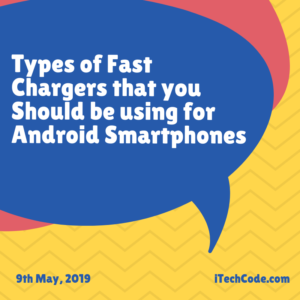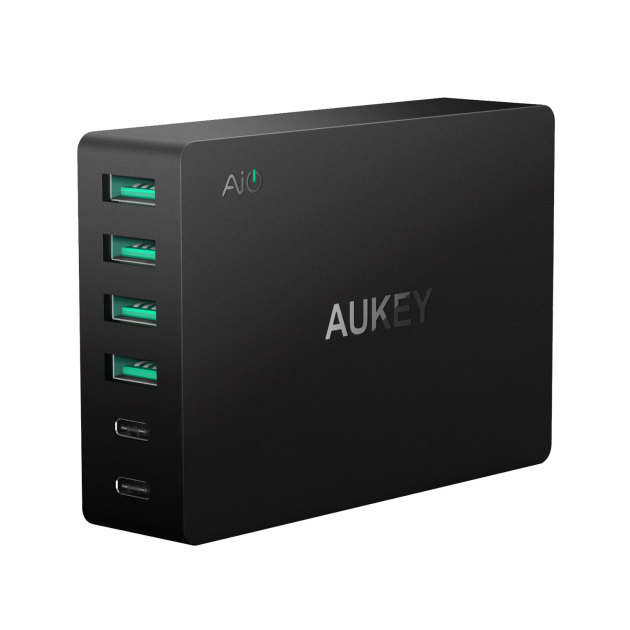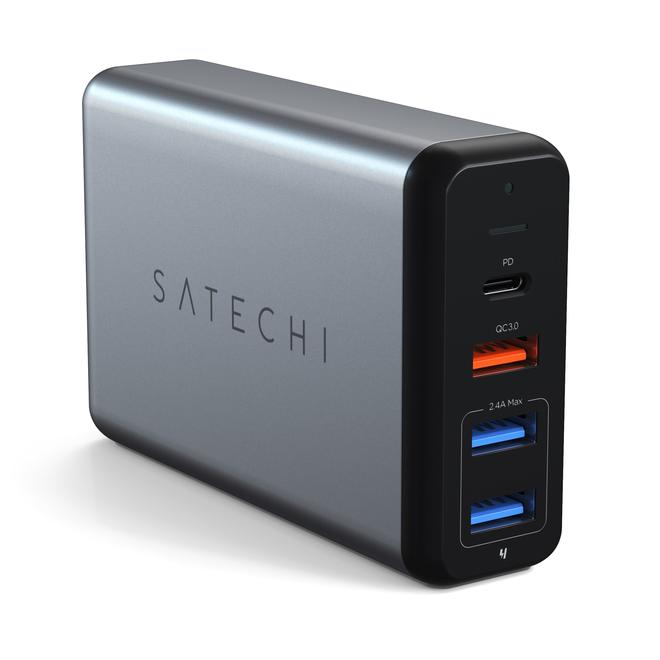Basically, everyone owns a smartphone these days, as it’s become something that you likely need to really be connected with the world, and can also be a great tool for work. However, one facet of smartphones that is somewhat undermined is the usage of what charger you should be using with your smartphone.

Nearly all smartphones these days come with their own wall charger, not only that but the charger that comes with the new smartphone that you buy also features it’s compatible fast charging tech.
Oh, except for the iPhone. Ever since the release of the iPhone X, and the iPhone 8, iPhones are now Power Delivery compatible and can also be fast charged through a USB-C to Lightning cable. Yet, the thousand dollar phone still comes with a single port 5W slow charger.
Moving on, fast charging is most known around Android smartphones though, and that’s what we’ll be going over in this guide. We’ll be touching base on both, Quick Charge and USB-C Power Delivery compatible types of chargers that you should be used to fast charge your Android smartphone.
However, please note that these types of chargers are really only meant for smartphones that have been released in the past 2-3 years. As those types of phones are the ones that are not only Quick Charge compatible, but also make use of a USB-C port so they can be used with USB-C chargers, too.
Anker PowerPort C 1 Wall Charger
Most Android smartphones that have been released in the past three years now make use of USB-C ports. If you have an Android phone that still has a Micro-USB port, well, let’s just say that you’re a bit behind the times.
This Anker PowerPort C 1 wall charger is proof that USB-C is becoming the true standard, as it uses to be that has a USB-C port would be with a wall charger with multiple ports. In this case, there’s just a single USB-C port on this wall charger.
Now, most might think that the USB-C port on this wall charger features Power Delivery, but that’s not the case, however, it does have a 15W charging speed. So how does it not features Power Delivery changing?
Well, that’s because PD charging starts at 18W of power, but even if this PowerPort C 1 wall charger doesn’t have 18W to provide, the 15W that it has is better than a regular USB-A port.
While most standard USB-A ports have a 12W charging, with the 3 Amp charging rate of this C 1 wall charger, it can actually fast charge USB-C Android smartphones because it follows the USB-C standard of connectivity and so it’s able to provide more power. As a result, even standard charging with USB-C is able to provide “Fast Charging” speeds, another reason why it’s the future.
Aukey Six Port Desktop Charger with Two Quick Charge Ports

Changing gears, this is Aukey’s six port desktop charger. Yes, we know, that’s a lot of ports to charge many devices.
The usage of its many ports isn’t the only value that it has to offers, it’s the power that the ports have to offer, too. The most notably the usage of two Quick Charge ports. While most wall chargers that feature the tech have just a single Quick Charge port, this desktop charger features two Quick Charge ports.
As a result, you’re able to charge two Quick Charge Android smartphones together. Something that can be highly useful if you and a family or friend have fast charging phones.
In addition to the two Quick Charge ports, this charger also has four standard ports that each have a 12W charging speed. Another added benefit of getting this charger is that the max output is rated at 60W, meaning that you can use a lot of its charging power at once. Even when fast charging with the Quick Charge ports.
Satechi Power Delivery Desktop Charger with Quick Charge

There are also Power Delivery desktop chargers that also have Quick Charge ports. This Satechi desktop charger doesn’t just have 18W of charging power, no, it’s actually able to provide 60W of charging power. That’s more than enough power to fast charge a Power Delivery compatible smartphone, and if you have a USB-C laptop, then using the USB-C port to charge it makes it even more reliable to use.
The other three ports on this charger are USB-A ports, but one of them is colored Orange, and you guessed it, it features Quick Charge 3.0, so you can fast charge your smartphone at the same time that you’re charging a Power Delivery compatible smartphone.
The other two ports on this charger are standard ports, that have a 12W charging speed, not too bad if you want to charge another two devices.
To top it all off, this Satechi charger also has a LED light that has a light sensor, so when it’s dark in the room, the light dims down so it doesn’t bother you when you’re going to bed.
AIDEAZ 20,000mAh Power Bank
Stationary chargers, like the ones that we mentioned above, are likely one of the most used types of chargers on the market. That said, the convenience of using a portable charger can highly offset set the usage of a wall charger. One of the best power banks that you can are ones that you are ones that have quite a lot of features.
Especially this AIDEAZ power bank. The portable charger has a 20,000mAh capacity, which means that you’re able to charge most smartphones to full power about three times with it.
The most special part that this power bank holds, though, is its the usage of three ways to charge from. It has a USB-C Power Delivery port with an 18W charging output, and the other output port is a Quick Charge port.
The one other charging method from this power bank is surprising and that would be its wireless charging capability.
The usage of wireless charging makes it even a better reason for Android smartphone users, as most Android smartphones are Qi wireless charging compatible. All the way back to Samsung’s Galaxy S6.
While the iPhone only just became Qi compatible with the release of the iPhone X, and the iPhone 8.
You can also stay updated by subscribing to iTechCode.